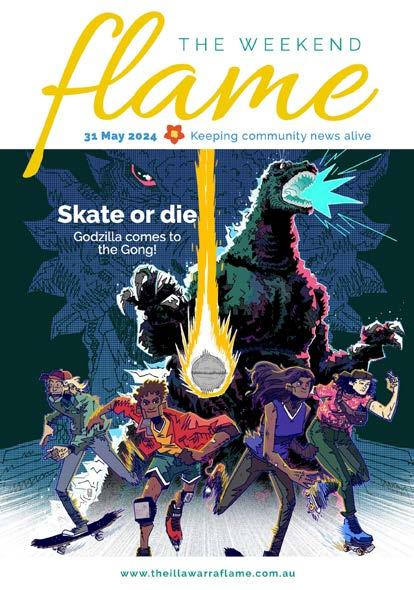


A FREE CONCERT SERIES donations appreciated SCAN TO BOOK NOW OR GO TO HUMANITIX MUSIC & TEA WOLLONGONG ART GALLERY







A FREE CONCERT SERIES donations appreciated SCAN TO BOOK NOW OR GO TO HUMANITIX MUSIC & TEA WOLLONGONG ART GALLERY




On Sunday, June 16, dig out some quality pre-loved or vintage clothes that need a new home, refresh your winter wardrobe, save money and say NO to textile waste.
The swap is at Number 99 (99 Wentworth St) in Port Kembla. It’s a creative space for all run by designer Elle McNeill and art therapist Ali Gerritsen, who also run classes and
Includes Q&A with filmmaker
On Wednesday, June 19 at UOW Science Space, attend a screening of Rising Up, a new documentary focused on hope, optimism and action for Australia and the Pacific.
Produced by ocean advocate, Take 3 for the Sea ambassador and Plastic Free Cronulla founder, Kal Glanznig, this film investigates the impacts of the climate crisis and plastic pollution on different communities, and showcased the voices of young leaders who are creating much needed change.
After the screening, hear from the filmmaker, Kal Glanznig and a panel of local experts and climate action advocates.
Rising Up was launched during
workshops for adults and kids, plus pop-up events.
Please arrive promptly at 3pm with your 5 - 10 (max) items of clothing in a bag/box to add to the swap collection! These will be arranged on tables between 3:00-3:30pm... before the swapping begins!
Tickets $15 + booking fee.
Click here to book.
Climate Action Week Sydney in May 2024.
This screening presented by Bright Ecology as a fundraiser for women in STEMM from UOW who are undertaking a global climate leadership journey with the Homeward Bound Initiative.
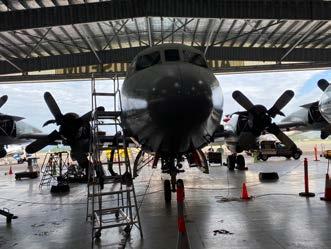
The event is on from 5.30-8.3pm next Wednesday, tickets $30 + booking fee via Humanitix 14-16 June

- Open Mic Night
June Reel Music 20-21 June Artists
Workshop 26 June Made From Scratch 13-14 July South Coast Readers and Writers Festival 19-20 July Kiama Readers’ Festival Click here for
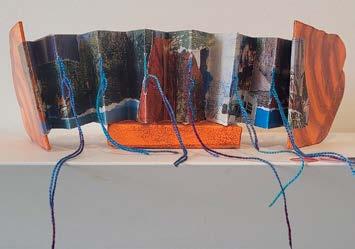
The author of Compassion chats to SCWC’s Elizabeth Heffernan
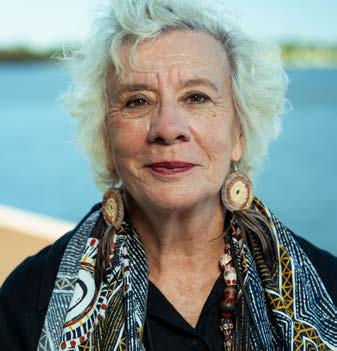
“My love of language and storytelling underpins all the writing.”
– Julie JansonWhat is your earliest reading memory?
My earliest reading memory is Winnie the Pooh by A.A. Milne. My mother is of English heritage and walked many miles pushing a pram to borrow library books so my brothers and I had access to literature and art. I remember being given the children’s book Walkabout by James Vance and learning about two lost children in the desert who are saved by an Aboriginal boy.
The book that made you want to be a writer?
I read every play in the Gladesville Public Library and fell in love with theatre. Especially Eugene O’Neill, Tennessee Williams and Ray Lawler’s Summer of the Seventeenth Doll. I watched my Aunty Rita perform in pantomimes in Sydney and I wanted to be an actress like her. The book that made me want to be a writer was Puckoon by Spike Milligan. I lay on my bed as 10-year-old in our Boronia Park housing commission home and laughed until I cried.
The writer who changed your mind?
The writer who changed my mind about Australian history and literature was Xavier Herbert’s Poor Fellow My Country
It opened a world of desert landscapes and Indigenous characters.
What is your latest writing project?
My current writing project, The Bloody Crow, is going rather slowly because I am worn out from writing Compassion, the sequel to my historical novel Benevolence.
I am writing this new Aunty June crime novel, set in the Northern Territory where I lived for many years in remote Aboriginal communities. I am passionate about environmental issues as well as Indigenous issues. I hope that through my fiction and poetry I can change some readers’ perceptions around restorative justice for First Nations people and a Makarrata. Through these means all Australians can join together in a better country that acknowledges its bloody past.
All my work investigates a First Nations perspective and mostly from a female point of view.
My love of language and storytelling underpins all the writing and I often integrate Aboriginal languages such as Darug into my stories. By creating narratives with languages that are not often spoken, I hope to regenerate interest in Australian Indigenous culture and language.
Book your spot at the festival

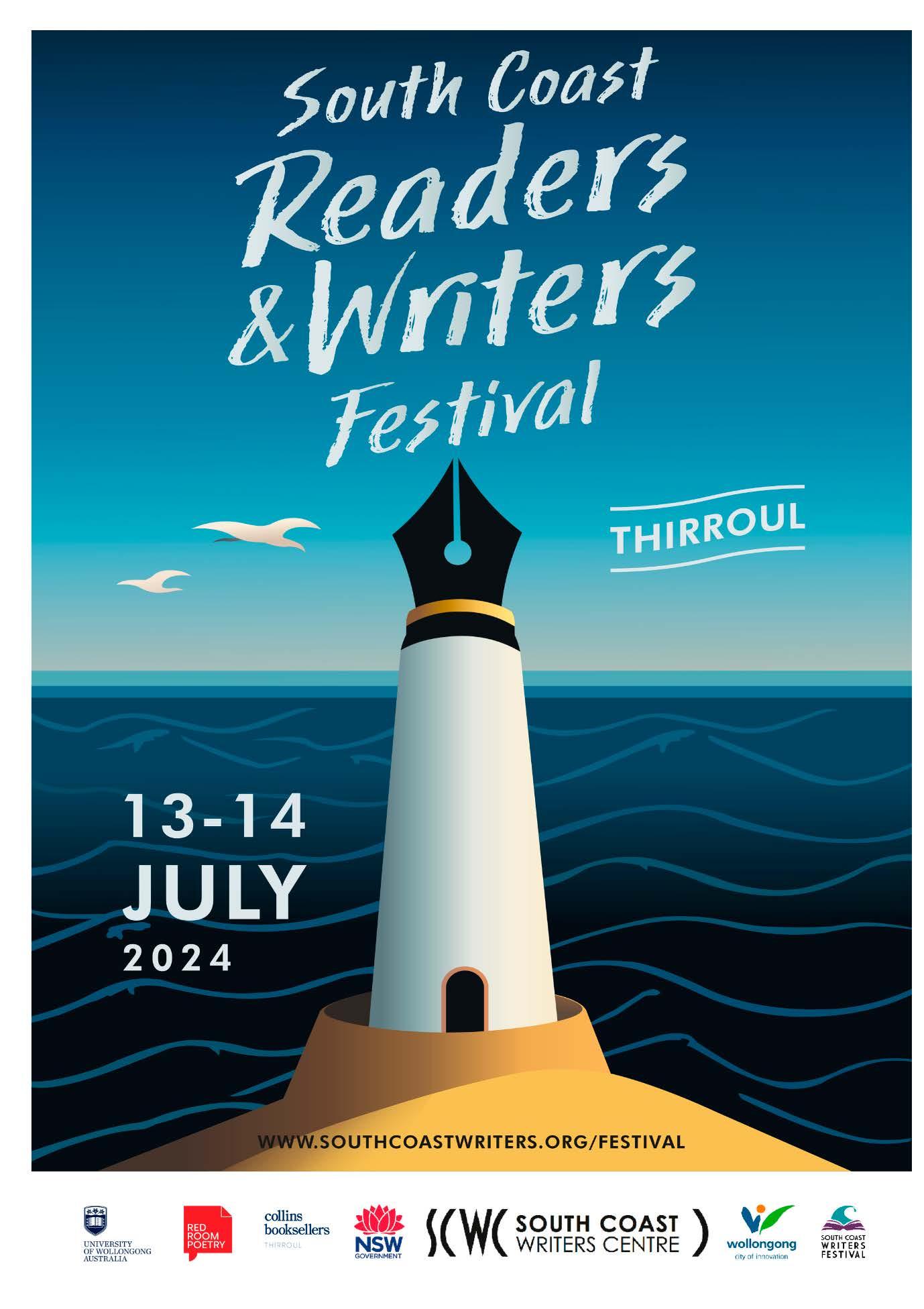
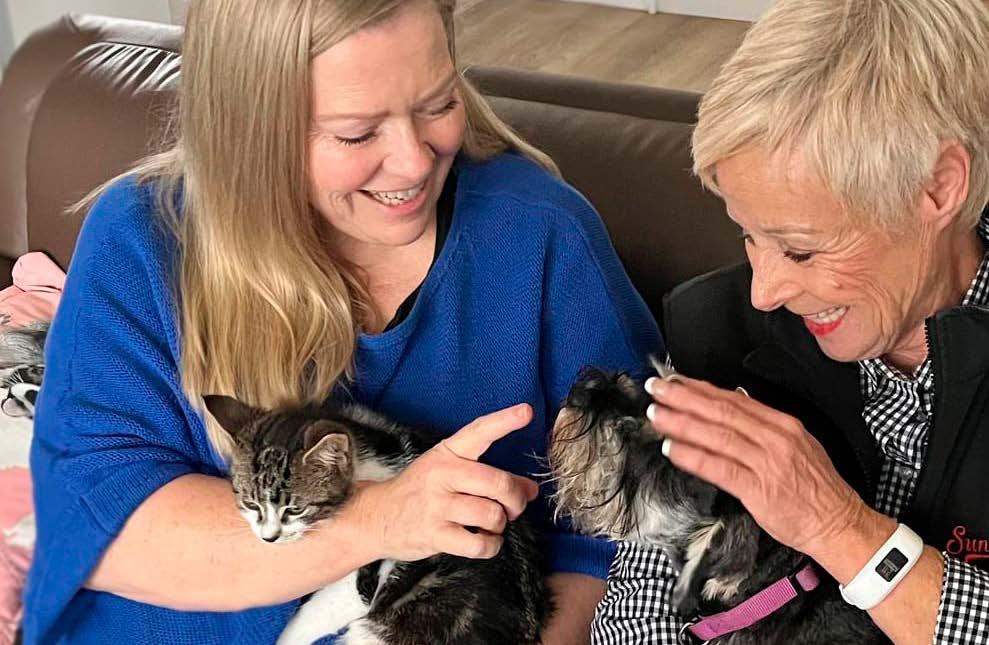
Overthe past 13 years, Nicole Harrison and Anne McNaughton have helped countless beloved pets from becoming strays via their Lost and Found Pets Illawarra Inc Facebook group.
Created in 2011 and with more than 47,000 members, the group is the first place many people will go to report a lost or found pet.
The group runs on volunteer power, with admins Nicole and Anne helped by three moderators, Scott, Janet and Sue.
Originally from North East England, Anne migrated to Australia in 1998. Her hobbies all involve animals and she has three Miniature Schnauzer dogs.
Nicole grew up in Sydney and spent time in the Illawarra for work before moving here permanently in 2007.
Nicole enjoys visiting animal sanctuaries and rescues, loves photography, swimming, fostering kittens and spending time with her family and friends.
Nicole, who recently finished working at an art supplies business, and Anne, a former territory manager, both rely on their people and customer service skills from their occupations to administrate.
“I worked for a large distributor of food and beverages that involved a huge amount of customer service and liaison and kept up my problem-solving and people skills, which are very necessary when dealing with people who are upset and have lost or found pets,” Anne said.
Nicole said: “I had multiple roles, from customer service, warehouse
JOIN
“We have an amazing group who work together to reunite, scan, transport and hold lost pets so that they do not end up injured, permanently lost or in pounds”
– Nicole Harrison
managing [to] packing orders, administration. Due to it being such a varied role, I became adept at multi-tasking and assisting people from all walks of life, which are both large parts of being admin.”
The group provides many services to help reunite lost pets with their owners.
“We have an amazing group who work together to reunite, scan, transport and hold lost pets so that they do not end up injured, permanently lost or in pounds,” Nicole said.
Nicole highlights the importance of having your pets microchipped.
“One of the biggest challenges I find is people not microchipping their pets, especially outdoor cats. I know there are financial constraints for some people, but it really is the easiest way to get your lost pet home safely,” she said.
“We fact check as much as we can and we always advise anyone who finds an animal to get proof of ownership before handing them over to anyone claiming to be the owner.”
After earning the community’s support and trust, the group has also branched out into rescuing and rehoming pets.
“We have a Lost and Found Rescue page and I also foster small dogs and puppies and cats and kittens,” Anne said.
As the admins, together Nicole and Anne spend more than 50 hours a week working on admin tasks, monitoring the group, organising transport and care for lost pets, writing and scheduling posts,
and replying to messages from community members.
Anne is motivated to reunite owners and pets, and to prevent pets being held in pounds and their owners’ incurring fines.
“Although I don’t do this for thanks, the obvious relief of the elderly man or lady who are missing their companion, or the family who have lost their beloved pet is a reward in itself,” Anne said.
Pets go missing nearly every day.
Anne and Nicole say the number of people willing to help out has increased, but it is still not enough and they urge all pet owners in the Illawarra to join the group.
Posts are strictly limited to lost and found pets.
Negative posts about vets or other organisations, rehoming posts, random questions, abuse, bullying and conflict are not allowed, with automatic restrictions set up to ensure that inappropriate posts are not published.
“We’ve created another Facebook group, Illawarra Pet Q&A for any pet-related questions, so that people had a place to post instead of our group,” Nicole said.
Nicole has six tips to keep your pet secure and get them home quickly: Make sure your pet’s microchip details are up to date; put a collar and tag on pets that can wear them; make sure yards are secure; put padlocks on gates; fix holes and loose palings; bring your pets inside if there is a storm or fireworks.
 Nicole (left) and Anne. Photos: Karen Wickham
Nicole (left) and Anne. Photos: Karen Wickham
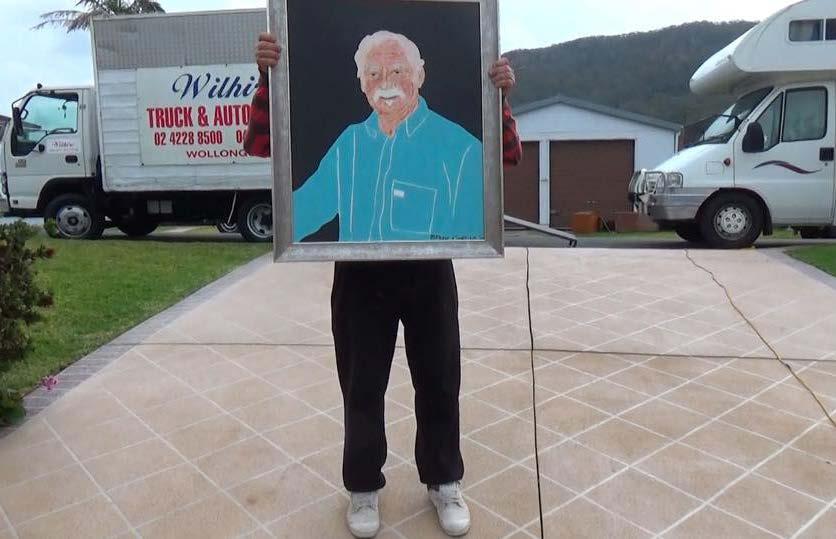
Grandma’s house is a 20-minute observational-documentary short film about my grandparents, Colin and Gay Cahill, who bought a house on Coledale Avenue for $10,000 in 1971 and, after 50 years of raising their children and grandchildren in the area, decided to sell in 2018.
Growing up in Coledale, I was surrounded by my entire family –siblings, parents, cousins, aunties, uncles, grandparents and locals – and my grandparents’ house was always within walking distance.
But, after 18 years of taking my grandma’s house in Coledale for granted, my grandparents sold.
I was studying at AFTRS, a film school in Sydney, at the time, so I got out a
camcorder and started filming the emotional final month of them in their house. I knew it was too special not to film, and filmmaking and writing has always been a way for me to hold onto memories.
What I’ve captured is a mockumentary-style home video of sorts. A capsule of a time gone by. But, also, my grandma’s story. One that I hadn’t heard before. Or maybe, I just hadn’t listened to.
Grandma is now in her 70s and loves walking the beach, where she beachcombs for shells and collects the rubbish daily. She makes shell art, which you can check out at Coledale Shell Art’s Facebook page. She is thoughtful, family-oriented, and she has been like a
second mother to all of us grandkids growing up in Coledale, frequently babysitting and housekeeping for us.
I’ve chosen to give Grandma the narrative voice, to lead the story as the matriarch of the house, and to get an insight into her life in Coledale over the years and why she decided to sell.
The film touches on how much the town has changed over the past few years as the migration of people out of cities reached an unprecedented demand, with house prices spiking, the pressure of gender roles in the household that Grandma was struggling to maintain as she got older, the need to downsize, and the impact of gentrification on the elderly. It’s a change to the lifestyle that they know and are comfortable with.
Grandma loved walking “up the shop” to the newsagent to buy the paper, getting to Thirroul without any traffic, and just the slower lifestyle that the towns used to have before they were as “discovered”.
As a director and producer, I am blending my love of sitcoms with the documentary format, and so it leans heavily into the domestic comedy jokes and the fast pace of our upbringing.
At times, we see real-time visuals of people enjoying Grandma’s house, contrasting with the reality of Grandma’s experience through voice overs. It has taken me years to come to terms with the sale, and it’s been through this film that I’ve been able to understand why Grandma did it, and her point of view.
I have loved the challenge of shaping a story around collections of memories, and I hope to even turn this story into a scripted show of the same name.
Through this film, I aim to preserve the precious memories of the ‘Old Coledale’ from 2018 and before, highlighting the importance of family heritage and local history, which will resonate with a wide audience. We hope the film will make older audiences feel seen and heard, that it will capture nostalgia as well as appeal to new millennials who can relate to the cost-of-living crisis.
I plan to submit to international and national film festivals before attempting to have it acquired by a broadcast channel.
For the past eight months, local emerging editor Tyrone McCrystal and I have been working on the edit voluntarily. We are currently crowdfunding to raise costs to assist with the completion and distribution. All crowdfunding supporters will receive a credit in the film.
Grandma has done so much for our family, and the town at large, so this is for her.
Thank you to all the sponsors who have already jumped on board.
To support the crowdfunding campaign and find out more, please follow this link
Pictured: Stills from the film Grandma’s house

“What I’ve captured is a mockumentarystyle home video of sorts. A capsule of a time gone by”
– Holly Trenaman

Ineverthought being a fairy would take me so many places. As a kid’s party entertainer working in Sydney, one of the many casual jobs I’ve had trying to make a living as a creative, it was a job I loved and loathed. The curious thing about being a fairy is that there are so many rules to follow, and the role can feel quite the opposite of ‘magical’.
I had so many stories: of face painting fails and horrible costumes, of painful parents and parties gone wrong. It was only a matter of time before I transformed my life experience into a one-woman show.
And so Party Girl, a rock n’ roll monologue with music, was born. It’s a
show about the reality of being a fairy, without the glitter. Well, maybe a bit of glitter. Party Girl also grapples with mental health issues, class and challenges notions of traditional feminine behaviour. It’s like seeing a stand-up comedy gig with songs that will make you cry, but there’s also party hats. And a unicorn rap.
It’s the work closest to my heart and I am so proud to share this show… for the first time overseas!
I first developed this work at Merrigong in 2019. I grew up in Wollongong and it felt important to make my first work at home. After two weeks of development we presented the
show over three nights in the Bob Peet Studio as part of the MerrigongX 2019 program.
Since then, Party Girl has travelled the country: Newcastle, Adelaide Fringe Festival (twice) and Sydney. In 2023, Party Girl took home a weekly award at the Adelaide Fringe Festival for Best Theatre.
Produced by Purple Tape Productions, now we’re flying all the way to Edinburgh for the 2024 Edinburgh Fringe Festival. Invited to play at Summerhall for the ENTIRE month of August, it’s a huge opportunity, and we have less than two months until we touch down in Scotland!
With this opportunity comes huge financial costs – flights, accommodation, venue hire, marketing… the list goes on. Our small but mighty team have thrown all their cash into making this happen, but we need your help to get there!
If you have anything spare to donate, please head to our Australian Cultural Fund and make a donation! All donations are tax deductible and your support will go a long way in covering the many costs associated with taking an indie show international.
The entire Party Girl team are graduates/staff of the University of Wollongong’s Bachelor of Performance Degree. The show is co-directed by Dr Tim Maddock and Lily Hayman, produced by Tyler Fitzpatrick and Lily Hayman, written and performed by myself, Lucy Heffernan (currently completing a Bachelor of Creative Arts Honours at UOW).
Taking this show abroad is a huge win for the Wollongong community. Party Girl wouldn’t exist if it wasn’t for Wollongong and all the wonderful creatives and opportunities to create bold new work that exist here. So please support us!
Donate to the Australian Cultural Fund here.
“I had so many stories: of face painting fails and horrible costumes, of painful parents and parties gone wrong. It was only a matter of time before I transformed my life experience into a one-woman show.”
– Lucy HeffernanAt left: Lucy Heffernan in ‘Party Girl’, KXT 2023. Photo: Clare Hawley. Below, from left to right: Lily Hayman, Tim Maddock, Lucy Heffernan, Tyler Fitzpatrick at KXT 2023. Photo: Lana Filies.


“We don’t have to answer to any particular stakeholder or industry”
“It’s amazing that something so important as this, that we don’t actually have a clear national picture of how many decarbonisation projects are proceeding”
– Chris GibsonAsthe decarbonisation revolution gathers speed, University of Wollongong researchers are stepping up to produce Australia’s first big picture of change, thanks to prestigious funding announced on May 30.
“We’re just really excited that here in the Illawarra we’ll have some substantial resources to be able to do the proper independent research that’s needed on this,” said Senior Professor Chris Gibson of UOW’s School of Geography and Sustainable Communities.
Chris has received an Australian Research Council (ARC) Laureate Fellowship, which will fund a five-year, $3.6-million project to study decarbonisation in industrial regions
Society and Space.
across the nation, including the Illawarra.
“One of the things I would say about decarbonisation in Australia to date is that it’s amazing that something so important as this, that we don’t actually have a clear national picture of how many decarbonisation projects are proceeding, what their value is; how many jobs they’re promising, as opposed to how many they might generate; how they hit the ground in different regions and with what effect. We just don’t know,” Chris said.
“It’s uncoordinated and no one has ever has ever thought to bring that information together. So that’s where our project fills the gap.”
Prof Chris Gibson is deputy director of the Australian Centre for Culture, Environment,Chris is a professor in geography. His expertise is in regional development, studying how Australian regions shift with global economic currents, tracking social, demographic and cultural trends.
As well as building Australia’s first national database of decarbonisation projects, Chris wants to look at the best way to take into account communities’ wishes, so that people feel included.
Up until now, he said, it’s been a “cart before the horse” situation, with decisions made around infrastructure. “And then the job of the social scientists like me is to sort of talk to the communities after the fact. So we do actually need to look critically at our community consultation processes.”
While offshore wind is the Illawarra’s hottest topic, renewable energy projects elsewhere – such as Borumba Pumped Hydro in Queensland – have also been a source of community controversy.
Chris said his research will give a national picture of decarbonisation in its many forms. “It’s everything from the potential for things like green hydrogen, for solar, for offshore wind … but it’s also things like our transportation networks, which are very carbon intense.
“The Illawarra is a real hub for trucking transportation, for example.”
Time is critical, Chris said.
“It’s a paradox we find ourselves in that really we need to be responding quickly to the climate crisis, and unfortunately we had a decade where that stalled in Australia, so we are playing catch up. The problem is that this pace of change is an important variable here.
“There’s a real risk that you can alienate people if these things proceed too quickly or if there’s an assumption that they must go ahead no matter what… We need to try and find ways to enact change, to do it as speedily as we can, but to not leave communities behind.”
He’d like to see more discussions about “benefit sharing” and establish an inclusive process. “People’s radars are highly attuned to spin and to tokenism. So when we talk about a better, more inclusive approach to these sorts of
decisions, it’s got to be genuine.”
The ARC-funded project will record and react to changes in real time, delivering current news that Chris hopes to also incorporate into his teaching about sustainable transitions.
“An ambitious part of the project is to map change in industrial regions across the whole country and be able to capture that and display that in a format that governments and community members and others can look at and make sense of as it’s happening,” Chris said.
“So we won’t just wait for five years and then deliver a kind of perfect result.”
The funding will support a team of eight – four full-time researchers with PhDs and four PhD students. One person’s full-time job will be to simply track different projects on the ground around the country. “There is a lot of volatility,” Chris said “Just because a project is proposed doesn’t mean to say necessarily that it will go ahead.”
Mis and disinformation – accidental and deliberate untruths – are a global challenge. “Levels of mistrust in government and decision makers are at an all-time high,” Chris said. “That’s very well documented and tracked in different surveys. In fact, not just in Australia, but in places like the US and the UK as well.”
Poor decisions about some developments have made communities mistrustful, Chris said. “So there is a high degree of scepticism there. You add social media into the mix and you have all the ingredients there for a lot of misinformation that can float around.”
Misinformation may not be the cause but the symptom of our malaise, and a potential cure could be a more inclusive approach to decision-making.
“It’s about looking at the process that underlies decision-making around decarbonisation projects and thinking about how can we improve that so that we can actually have a better foundation of trust between communities, between industry and with government.”
Chris described the ARC funding as especially valuable as it is independent. “We don’t have to answer to any particular stakeholder or industry.”
“It’s everything from the potential for things like green hydrogen, for solar, for offshore wind … but it’s also things like our transportation networks, which are very carbon intense.”
–Chris Gibson

It’s not me, it’s you
Andy Lawrence shares her experience of postpartum depression
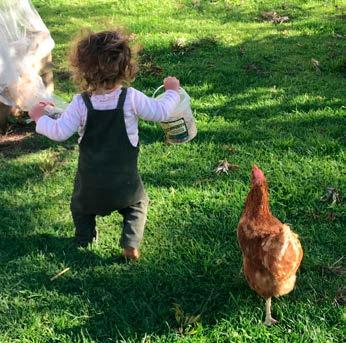
“There is still little understanding of matrescence (and even less for patrescence) as a significant rite of passage that requires deep community engagement and support.”
– Andy Lawrence
AfterI was diagnosed with postpartum depression, I kept myself hidden under the shame of my perceived failure. I continued to internalise my depression, bending to the idea that my feelings and mental state were indication of my deficiencies as a person.
I had told my therapist that I fantasised about crashing the car so I might get a week’s break in hospital. I allowed his alarm at that confession to seep into me. I allowed myself to believe that I was perhaps dangerous and terrifying and most devastating of all: that my children deserved better than me. I let the concern of my husband and therapist justify the unfolding pathology in my core self. I let that concern bloom into a wound that already existed: the wound that told me I was inherently broken. “I think we can call this what it is: postnatal depression,” my therapist had said.
There is beauty in this story. For when I heard those words and they broke me down, cutting away the fierce wall of defiance, I curled up at the bottom of that pit, that core wound. I grieved and whimpered until, having no defences left, I tentatively reached out a hand toward another mum. And then another, and another.
That friendship circle I had built in
my pregnancy, along with other dear mother-friends, wrapped me in such normalcy and validation for my experience. They shared similar stories and I realised how common these thoughts and feelings were in the mothers all around me. I realised that I wasn’t alone, in fact, I never had been.
In sharing my story, the shame that kept me silent began to melt away.
Connecting with those women made me realise two things. The first was that my husband and male therapist, loving as they are, can never truly understand the experience of motherhood and putting all my eggs of support in their baskets robbed me of the attuned witnessing I needed to find self-compassion.
And the second realisation was that there was nothing f**king wrong with me. This realisation had beautiful, heart-aching relief breathing through me. I was not broken or defective, in fact, my depression was indicative of that. My body, mind and sense of self was responding normally to an unhealthy and abnormal level of pressure. And that pressure is called modern parenting in the patriarchy.
My body, a result of hundreds of thousands of years of evolution (millions of years if you include the early hominins), was trying to indicate to me that something was wrong. My 30-odd
years of acculturation in this particular point in history blinded me to the external danger posed by the rapid human social change of the last few hundred years. The rate of our bodies’ evolution far lags behind the vast changes in our social structures. And these structures do not serve our bodies. Our bodies still expect to be living in deep relationship with a tapestry of others in proximity, their lives and support interwoven into ours.
I was depressed. But not because I wasn’t good enough or strong enough, not because of some seemingly random hormonal imbalance. No, it was because we live in a culture that expects women to grow babies, give birth and raise those children with no support. It’s because our culture doesn’t see the inherent value in the work of parenting.
Legislation that allows parents to not only survive but to thrive might be the most impactful social investment any government could make.
And yet we remain somewhat of a forgotten species, expected to deal with the impossible hand dealt by our culture. A culture that does not prepare us in any meaningful way for the physical, emotional and spiritual upheaval of parenthood. No, society shows us that the most important consideration of becoming a parent is what pram and cot you will choose.
Despite increasing awareness, there’s still barely a whiff of recognition of the immensity of matrescence: the physical, emotional, social and spiritual transition to motherhood. There is still little understanding of matrescence (and even less for patrescence) as a significant rite of passage that requires deep community engagement and support.
If I had someone to help me cook, clean, shop, do laundry, care for the children, play with the children, walk the dog, feed the chickens or help with any other of the innumerable and endless tasks that fill the life of a parent, things would have been different.
Because beside all the daily physical tasks, the heaviest burden of all is facilitating the emotional wellbeing of the family, myself included. If I had the space and capacity to tend to that monumental responsibility, I may have even thrived.Where patriarchal ideals seek to keep us internalising our grief and rage, connection with community becomes the antidote to remain grounded.
And when we come together and share our stories, we remember that our worth is not dependent on meeting an impossible standard. We remember that we are worthy and good and whole exactly as we are. And that we are exactly who our children need.
And there is so much beauty in that.


To someone immediately, the Mental Health Line is open 24/7 on 1800 011 511. Beyond Blue offers emotional health and wellbeing resources for new parents. Or call 1300 22 46 36 for 24-hour support. If you have postpartum depression, call PANDA on 1300 726 306 or click here for more resources
Winter has arrived and MCCI Refugee Support has started to distribute handmade blankets and blankets purchased with $2000 of generous donations to support 68 newly arrived community members. The cold season brings new and unfamiliar challenges. People from refugee backgrounds have fled their homes and, along with it, familiarity and comfort to seek safety and a new life in Australia, only to face the winter chill without enough winter supplies to keep warm.
We have already distributed 48 blankets so far and will continue to do so until none of our community members are cold this winter. You can still donate to the appeal: www.givenow.com.au/appeal

It’s time to talk about tiny little vines, the ones you walk past a thousand times without noticing, the ones that rarely flower and so have few or no ‘points of interest’. They are so important to local ecologies and are significant components of biodiversity. And yet it can take a long time to get your eye in and see them.
It takes time, but it is so worthwhile to see these beautiful little plants making their way among the tall trees or spreading out to cover bare earth recently denuded by flood waters. Seeing the detail is one of the big benefits of regular bushland wanders: what it does to your mind and your sense of place as you see
more and more of what’s there and what’s happening, not just the big-picture elements.
It’s hard to describe the gradual process of connecting with, or relating to, or becoming immersed in nature in a particular place, but it is an experience that can be eye-opening and profoundly moving. Attending to what you see, immediately before you and over time as you go back to a place again and again, is for me a really important part of the process.
For example, the largest and most dominant plants, normally trees, that are characteristic of any area and used as a shortcut to describe its ecology, are
typically much less numerous and diverse than the ground covers: the ferns, grasses, herbs, forbs, and other little things.
Just in a small area like the one pictured below (at right) in wet sclerophyll forest, 10cm by 15m or so, there are half a dozen different species growing together, including ferns, climbers and ground covers.
So back to the tiny vines. There are dozens of different species. I’ve featured the Bearded Tylophora (Vincetoxicum barbatum) and the Love Creeper (Glycine species) before, but just in the pea plant (Fabaceae) family there’s half a dozen more, and they’re readily seen in local wet sclerophyll forest and grassy woodland.
These little beauties won’t dominate an area and when they’re in flower, if you lean in really close, they’re just absolutely adorable, with pinks and purples and yellows galore.
Pictured below (at left) is the teeniest tiniest of climbers, Pullenia gunnii or Slender Tick Trefoil, and when it’s in flower it moves from being a barelynoticeable-clover-thing to really really pretty. Formerly known as Desmodium gunnii, it had a scientific name change a couple of years back.
The yellows are represented by one of the smallest and hardest-to-find tiny little climbers, Zornia. Sprawling along the ground, and more typically considered a ground cover, but sometimes scrambling up into nearby shrubs or trees, its yellow pea flowers are incredibly cheerful when you actually get to see them.
The main image (at left) features the gorgeous tiny flowers of Zornia (Zornia dyctiocarpa). This low-growing or slightly climbing pea plant is widespread but uncommon in the region. (Photo thanks to Robert Miller.)
These tiny little Fabaceae-family climbers have the added benefit that they fix nitrogen, a key nutrient for plants that most plants can’t generate for themselves. So when a plant dies its decomposing body returns nitrogen to the soil, making it available to other plants that can’t fix nitrogen for themselves. That’s an awesome biodiversity bonus of these little plants, on top of their intrinsic appeal.
Keep an eye out for them any time you’re in your local patch of bushland, growing low or medium or high.
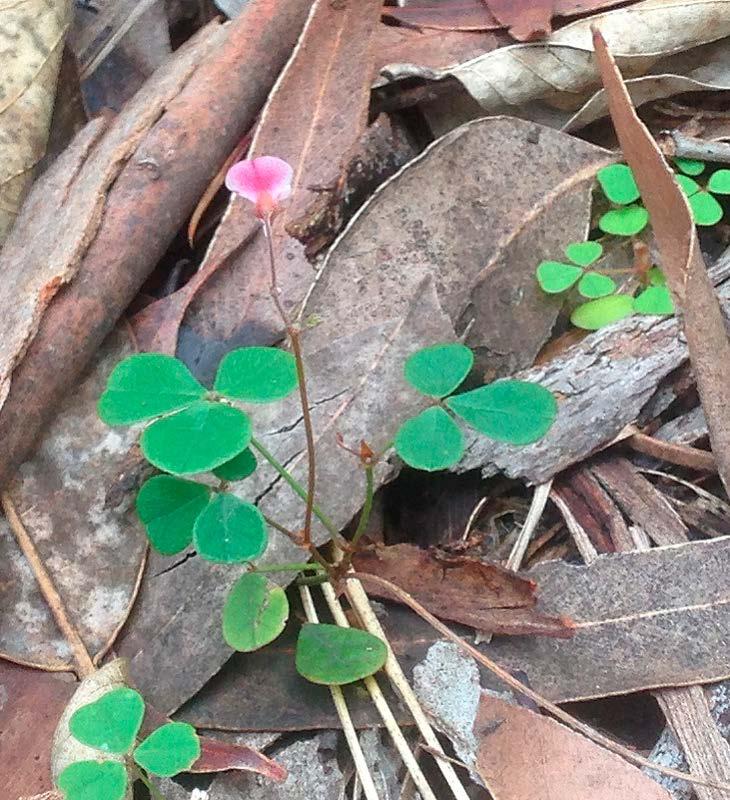
“It takes time, but it is so worthwhile to see these beautiful little plants making their way among the tall trees or spreading out to cover bare earth recently denuded by flood waters”
– Emma Rooksby
Andy Lawrence looks at the life of a barnacle

“Barnacles are not molluscs, as their shells would suggest. They are crustaceans, related to crabs and prawns.”
“My absolute favourite fact about these creatures is due to my juvenile sense of humour: acorn barnacles have infamously long penises.”
– Andy Lawrence
Iwouldn’tbe surprised if you’ve never given a second thought to the humble barnacle clinging to the rocky tideline on beaches of the Illawarra and beyond. Admittedly, until well into my adult life, I treated the creatures with mild disdain and a healthy wariness.
This attitude was honed by my experience of having knees, hands and feet shredded by their calcified carapaces while entering and exiting the water for spearfishing.
I once witnessed the skin of my brother’s foot be peeled back by a barnacle as expertly as if the ocean had taken a potato peeler to his sole. I also lived a good two years with pieces of
Photo: Andy Lawrence
But I’ve since learned that barnacles are pretty fascinating in their own right. Granted, not as fascinating as the life history of eels (that’s an internet rabbit-hole you want to be sucked into, trust me), but they have some pretty great life-history facts to contend with. There are two main groups of barnacles.There are goose barnacles, which have a leathery ‘neck’ attaching Barnacles at a Wollongong beach.
barnacle lodged in my knee after a misplaced kick through shallow, rough water. It took that long for the bits to slowly make their way out of my skin, though a nice round scar remains– a perfect imprint of the barnacle crater. A kiss from the ocean, if you will.
the body of the barnacle to the substrate. You often see goose barnacles attached to flotsam washed up on the shore, and they’re actually a delicacy in several countries around the world.
The second are sessile barnacles that attach directly onto the rock or other substrate. Known by the cute name of acorn barnacles, they account for the majority of known barnacle species.
Now before I get onto acorn barnacles, I should tell you about the lesser known group of barnacles that do not have an external shell. Instead, this group of barnacles, in genus Sacculina, parasitise other crustaceans, including crabs with their soft, sack-like bodies. And if it isn’t enough of an insult for an amorphous blob to be feeding off the juices of a crab while it’s still alive, Sacculina barnacles engage in parasitic castration. Meaning, they attach themselves to the reproductive organs of the crustacean, rendering it sterile and preventing reproduction, which is akin to death in the natural world.
You’ll notice I said these barnacles parasitise other crustaceans: that is because barnacles are not molluscs, as their shells would suggest. They are crustaceans, related to crabs and prawns.
And now back to acorn barnacles. My absolute favourite fact about these creatures is due to my juvenile sense of humour: acorn barnacles have infamously long penises. Up to 10 times their body size! So long, in fact, that they use that considerable length to impregnate adjacent females within their penile range. The best part, in my opinion, is that the penis dissolves at the end of the mating season and then regrows for the following year. What a skill!
To further prove their reproductive prowess, most acorn barnacles are hermaphroditic, meaning they possess both male and female reproductive organs. So, if no other barnacles are within reach of their long-range missiles, they simply clone themselves through self-fertilisation.
This is especially handy since they are
permanently stuck to whatever surface they adhered to as juveniles. Even after the crustacean inside dies, the shell remains attached, virtually indestructible. Well, my knees would attest to that anyway.
But how do they get there in the first place?
Barnacles begin their lives with a short stint as free-floating planktonic larvae before adhering to a hard surface. This surface can be anything from the hull of a boat to a turtle’s shell but most commonly it’s intertidal rocks.
When it’s time to settle down and find a permanent place of habitation, the barnacle uses its head and the cement glands in the antennae to glue itself to the surface. From there, it metamorphoses into a juvenile barnacle that looks just a miniature version of the real deal.
From there, each barnacle begins building its shell-home.
The architecture of each shell is roughly the same. The prerequisites for barnacle shell construction, as stipulated by the Barnacle Building Board, are as follows: must be tough as nails, tough enough to gouge human feet and remain long after tenant perishes; and construction must include a trapdoor.
The trapdoor serves as the barnacle’s connection to the outer world. When the tide is out and the barnacle is exposed to the air, the protective door remains closed against the possibility of desiccation.
When the tide is high and the barnacle is in contact with the water, it unfurls its feathery legs to catch and feast on plankton and detritus floating by.
My interest in barnacles comes from an aesthetic standpoint too – they can be very beautiful, like the cluster of pink acorn barnacles pictured, found in Wollongong.
Not so boring after all!
My hope is that next time you step on a barnacle, you’ll pause, not just to swear at it but also maybe to give a nod of appreciation… thumbs up? Finger guns?
Okay, I won’t judge if you still just swear and glare.
“If it isn’t enough of an insult for an amorphous blob to be feeding off the juices of a crab while it’s still alive, Sacculina barnacles engage in parasitic castration”
– Andy Lawrence
Support independent local news for $5 a month and you’ll receive the Weekend Flame + access to all our interactive digital puzzles

